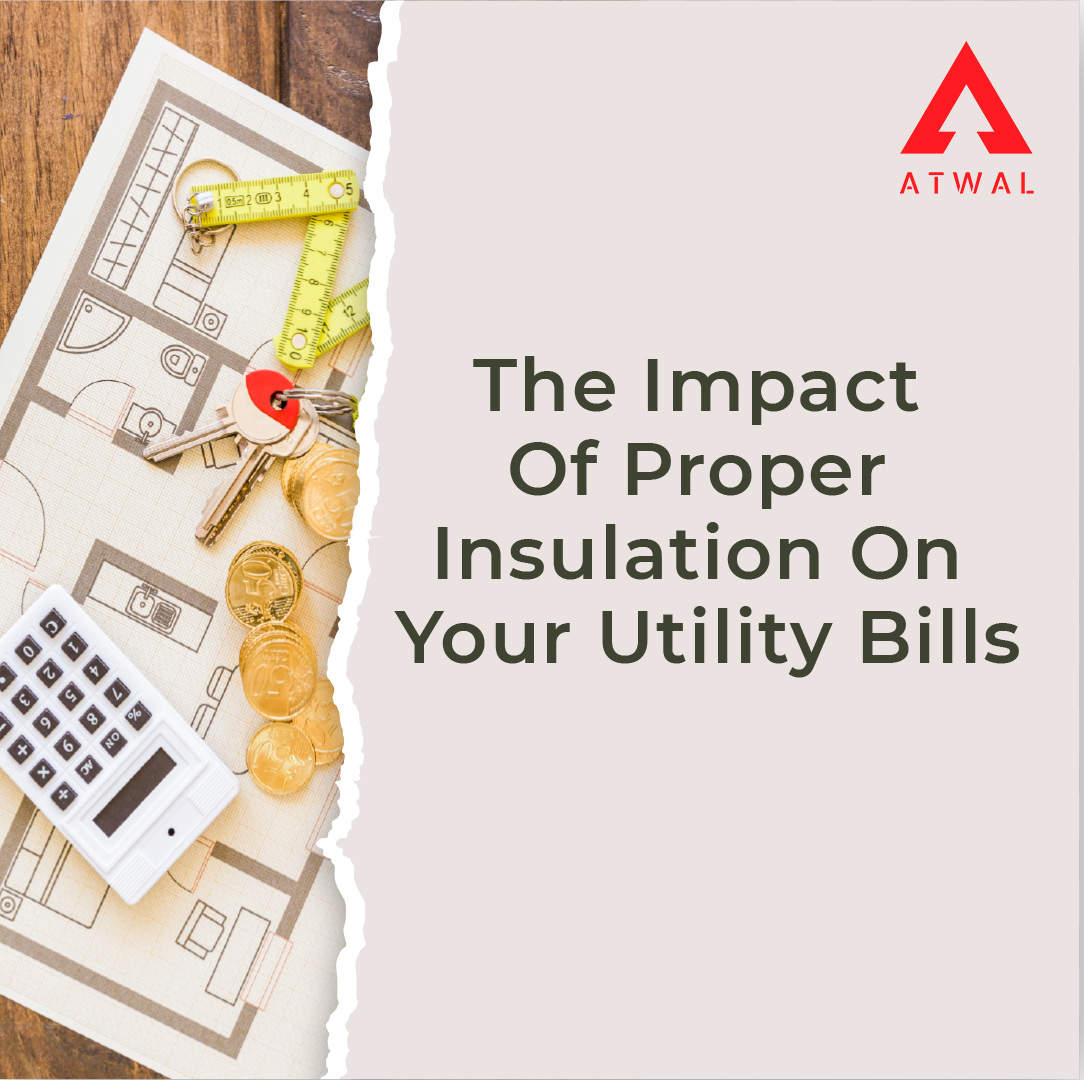Sun, Aug 27, 2023
Read in 6 minutes
Learn how proper insulation can save you money on your utility bills. Find out about the different types of insulation and their benefits, and how to choose the right insulation for your home. Insulation impact on utility bills surely is something that will help you manage the bills better. If you are looking for different ways for Utility bills reduction then having proper insulation is the answer!

When it comes to managing household expenses, one area that often feels like a constant battle is utility bills. Rising energy costs can put a strain on your finances, but there’s a smart and effective solution that can help you cut back on those expenses: proper insulation. In this blog, we’ll delve into the transformative power of insulation and how it can significantly slash your utility bills while also enhancing your overall living experience. Home insulation benefits are endless if they are incorporated into your homes properly.
Insulation serves as a barrier that prevents the transfer of heat between the interior and exterior of your home. During the scorching summer months and chilly winters, insulation plays a crucial role in maintaining a comfortable indoor temperature. But its benefits go beyond comfort; insulation also directly impacts your utility bills. So how does insulation save money on bills? Well you are about to find out.
Insulation is your home’s silent hero, working tirelessly to regulate indoor temperature by creating a barrier against external temperature fluctuations. While its immediate benefit is ensuring your comfort throughout the seasons, its impact on your utility bills is equally remarkable. Insulation impact on utility bills is a significant concern in today’s time. It’s not having insulation that is important, it’s having proper insulation that makes a difference. Home comfort is something that everyone wants afterall home is somewhere we go to get away from the world and just relax.
Energy efficiency is the cornerstone of cost-effective living, and insulation plays a pivotal role in achieving this goal. By providing a shield against extreme outdoor temperatures, insulation minimizes the strain on your heating and cooling systems. As a result, your home remains comfortable while consuming significantly less energy. You really can save a lot of energy if you have Proper insulation. Energy-efficient homes are the talk of the town nowadays, so if you want to save money, you know what to do.
The financial implications of proper insulation are significant. Studies have shown that homes with adequate insulation can experience up to a 20% reduction in heating and cooling costs. Imagine the dollars saved over the course of a year, not to mention the years to come. Insulation is a wise investment that yields both immediate and long-term financial benefits.
There are different Insulation types through which you can have a large number of energy savings. Which is good for the environment and saves you some bucks as well. One of the biggest benefits of home insulation is home comfort and having proper insulation helps you achieve that.
Fiberglass insulation has been a staple in the industry for years. Composed of tiny glass fibers, it’s known for its affordability and versatility. Whether in batts, rolls, or loose-fill form, fiberglass insulation is easy to install and offers excellent thermal resistance. It’s a cost-effective solution that can fit snugly into various spaces, making it a popular choice for attics, walls, and floors.
For eco-conscious homeowners, cellulose insulation is a standout option. Made from recycled paper products treated with fire-retardant chemicals, cellulose provides excellent thermal performance while minimizing environmental impact. Its loose-fill nature allows it to reach into crevices and corners, making it an ideal choice for retrofitting and hard-to-reach areas. Hence it is a good choice for your next construction project.
When it comes to sealing every nook and cranny, spray foam insulation takes the lead. This versatile material expands upon application, creating an airtight seal that prevents heat transfer and reduces energy loss. Spray foam excels in insulating irregular spaces and can also serve as a barrier against moisture infiltration, enhancing your home’s structural integrity.
Rigid foam insulation boasts an impressive R-value, indicating its thermal resistance. Available in different thicknesses, it offers superior insulation performance without taking up much space. Rigid foam is commonly used for insulating foundations, exterior walls, and roofs. Its durability and resistance to moisture make it a reliable choice for long-term insulation needs.
In hot climates, reflective insulation shines as a solution to combat radiant heat. Consisting of reflective aluminum foil, this type of insulation reflects heat away from your home, keeping indoor temperatures cooler. It’s often used in attics and under roofing materials to minimize heat absorption and reduce cooling costs.
Regardless of the insulation type you choose, the benefits are substantial. Improved energy efficiency leads to reduced utility bills, creating long-term savings. Insulation also enhances indoor comfort by maintaining consistent temperatures and reducing drafts. Furthermore, effective insulation contributes to a quieter living environment by minimizing noise infiltration.
While it’s an investment with clear benefits, understanding the cost of insulation is crucial for making informed decisions about your home’s comfort, energy efficiency, and overall financial well-being
Factors Affecting Insulation Costs
Costs typically range between $2,130 and $6,700. Depending on the type of project you take and the area of the house the price may change as well. Cost of proper insulation may vary according to many things.
Proper insulation isn’t just about keeping your home warm in the winter and cool in the summer; it’s a smart financial move that can significantly reduce your utility bills. From energy savings to increased property value and sustainable living, the advantages of insulation are far-reaching. Take the first step towards slashing your utility bills by evaluating your insulation needs and embracing a more efficient and comfortable living space.